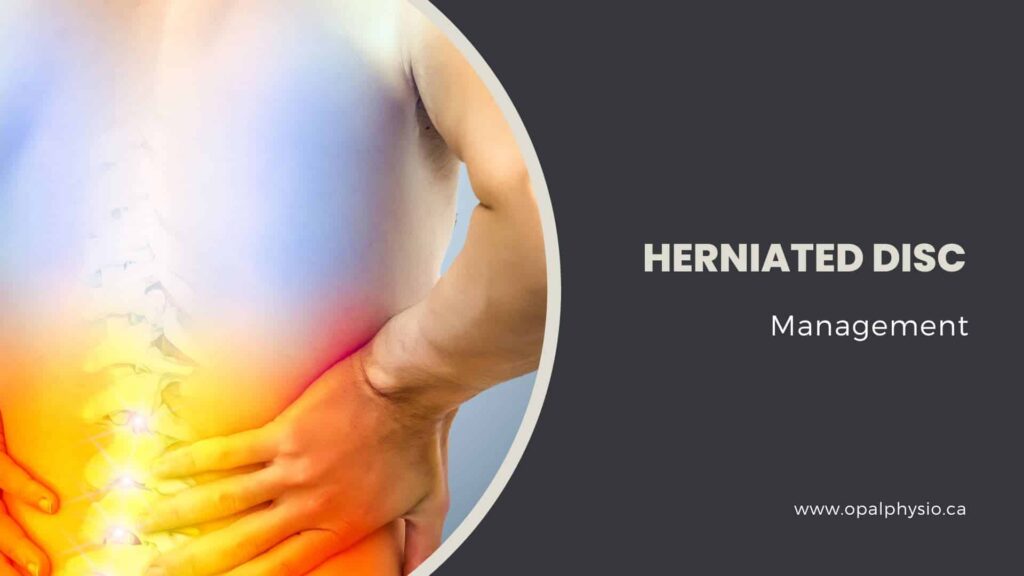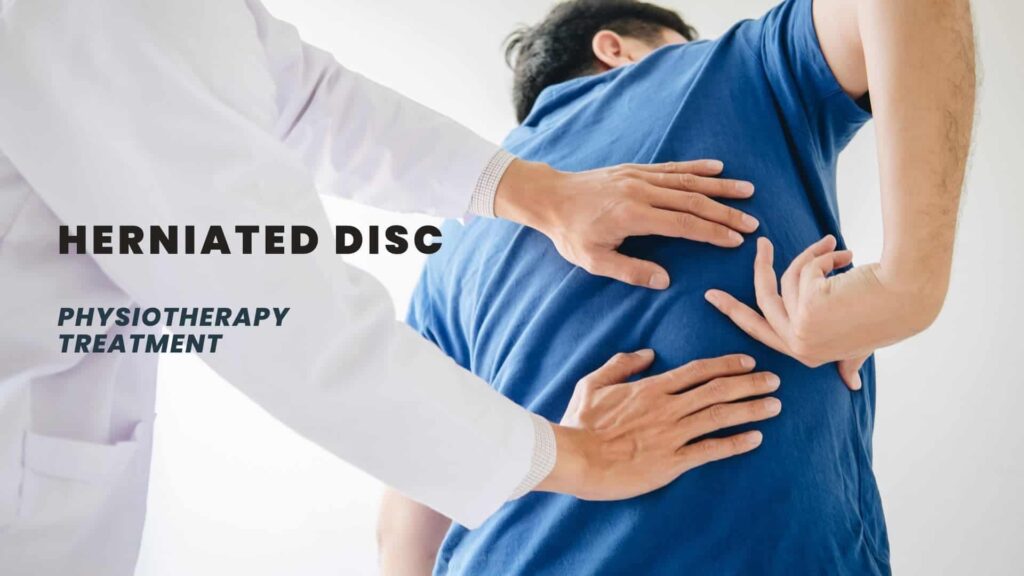Herniated Disc
Our clinic has been serving the local community for several years, providing personalized and effective physiotherapy treatment for various musculoskeletal conditions.
Our experienced physiotherapists specialize in the assessment and treatment of herniated discs. A herniated disc, also known as a slipped disc, occurs when the soft inner gelatinous material of the disc pushes out through a tear in the tougher exterior. This can cause pain, numbness or weakness if it presses on a nearby nerve.
Herniated disc treatment
At Opal physio clinic, we utilize a variety of physiotherapy techniques to help patients with herniated discs. Our goal is to relieve pain, improve mobility, prevent recurrence and help patients return to their normal activities.
Physiotherapy management for pain and other symptoms related to disc herniation is an effective and successful treatment for many individuals.

What is a herniated disc?
The spine is made up of bones called vertebrae that are separated by discs. These discs act as cushions between the vertebrae and allow flexibility in the spine.
A herniated disc occurs when the inner gelatinous nucleus pulposus pushes through a weakened area of the outer fibrous annulus, causing it to bulge or rupture. This is often referred to as a slipped disc, protruding disc or ruptured disc.
Herniated discs are most common in the lumbar spine (lower back) but can also occur in the cervical spine (neck). They often result from age-related degeneration but can also be caused by injury or strain.
There are three types of herniated discs, which are classified by their location.
Diagnosis of a Herniated disc as the cause of pain is identified from detailed patient history, physical examination, imaging and scan ( MRI/CT scan ).
Risk factors for herniated disc
The most common risk factors for herniated discs are:
Herniated disc symptoms
Cervical disc herniation symptoms may include:
Lumbar disc herniation symptoms may include:
In severe cases, symptoms may include :
General treatment and management of herniated disc
Treatment options for disc herniation include
It is critical to consult with your physician if you have severe pain and any associated neurological symptoms, which will require further investigations and management.

Physiotherapy for herniated disc treatment in Langley
Herniated discs can be difficult to live with, especially if they lead to neck, lower back, or extremities pain.
The first step is to identify the underlying cause of the problem and then ensure that you take appropriate treatment to alleviate any pain you may be feeling.
The treatment of a herniated disc depends on the severity of the symptoms. At Opal Physiotherapy, we offer a range of treatments and services to help relieve the pain, reduce the inflammation and get you back with your life as soon as possible.
Physiotherapy treatment can include:
Our physiotherapists will perform a thorough assessment to determine the location and severity of your herniated disc. We will also assess your posture, flexibility, strength and range of motion.
Treatment techniques we may use include:
- Spinal mobilization to improve mobility
- Soft tissue massage and trigger point release
- Therapeutic exercises to strengthen the core and improve flexibility
- Postural correction exercises
- Manual traction to gently stretch the spine and pain relief
- Low level laser therapy(LLLT) for pain relief
- Heat and ice therapy to reduce inflammation and pain
- Education on rest, activity modification, and gradual return to activity as pain improves.
Our physiotherapist will explain postures and exercises aimed at relieving herniated disc pain. They can instruct you on which exercises improve your spine-supporting muscles.
We create customized treatment plans to meet each patient’s needs. Our goal is to help you manage your symptoms and improve function so you can get back to your daily activities.
Don’t let a herniated disc stop you from living your life. Contact our clinic today to schedule an appointment with one of our experienced physiotherapists.
